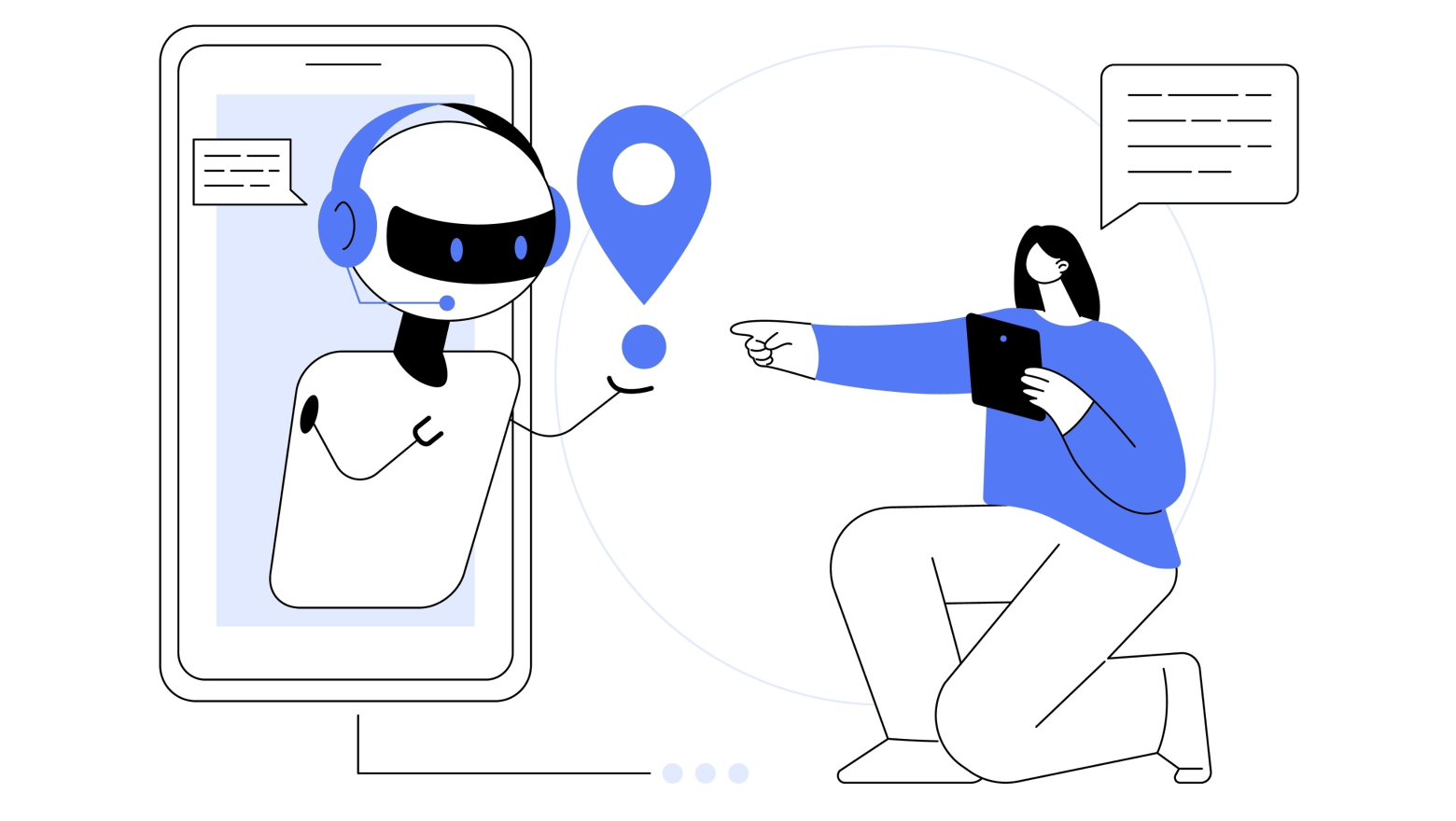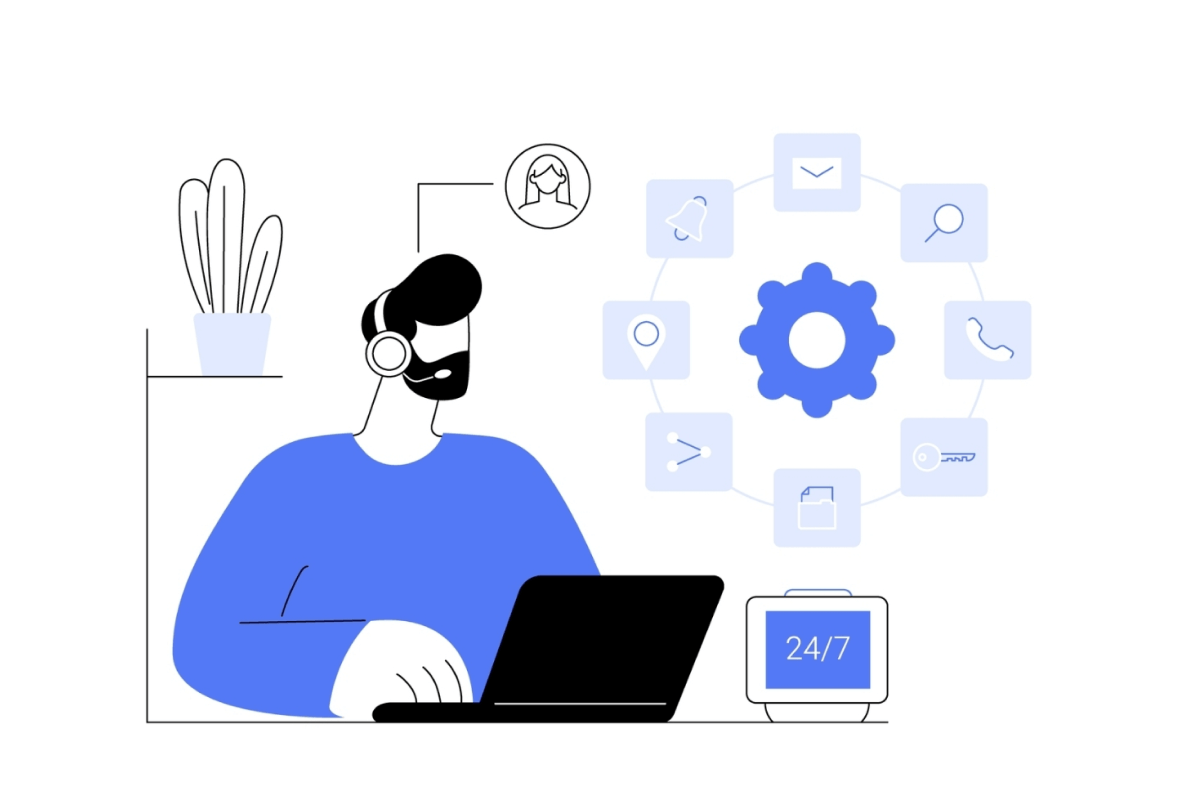The global tourism industry earns trillions of dollars a year and it continues to recover fast after a steep fall during the COVID pandemic. At the same time, the problems of language barriers and the proper level of service for people with physical disabilities persist.
That coincides with the rise of speech recognition technology which can greatly contribute to solving both problems.
In this article we will discuss the current state of speech recognition technology and its future within the global Travel and Hospitality sector.

Global Tourism Industry and non-English speaking countries
The global tourism market size was worth around USD 11.39 trillion in 2023 and is predicted to grow to around USD 18.44 trillion by 2032 with a compound annual growth rate (CAGR) of roughly 5.5% between 2024 and 2032, says Zion Market Research.
International tourism is expected to grow at higher rates than domestic tourism, say analytics.
As English remains an international lingua franca, more and more tourist destinations are opened not in the English speaking countries. The same with the guests themselves — an increasing share of tourists come from non-English speaking countries.
Based on the travel purpose, the medical tourism segment is expected to dominate the market during the forecast period. The Medical Tourism Association estimates that every year, over 14 million individuals worldwide travel abroad to receive medical care.
All these factors contribute to growing demand in the Travel and Hospitality industry not only for the machine translation services but also for the machine speech recognising services.
What is Speech Recognition?
Machine speech recognition is a technology based on artificial intelligence and machine learning that allows computer programmes to understand audio signals. Inextricably linked to this technology is transcribing, as the process of transforming speech into written form, specifically a textual transcript that captures spoken words and phrases.
Types of Speech Recognition
Machine speech recognition is divided into three types depending on the operating technology.
- Streaming speech recognition transcribes speech in real time. For example, there's a video conference going on, and you need to use automatic subtitles for your colleague with moderate hearing loss. The same technology works in software for voice-controlled devices — while you tell your smart home what to do, the software recognises your speech and translates it into machine-understandable commands.
- Synchronous speech recognition is mainly used in messengers to translate pre-recorded short audio messages into text. It works very fast, but the message duration is usually less than 1 minute.
- Asynchronous speech recognition is used to translate already completed audio recordings of virtually unlimited duration into text. Both recording and transcription can last for hours. This technology is used when the speed of recognition is not so crucial.
How does the speech recognition process work?
The process of automatic speech recognition includes the following stages:
- audio capture — the audio signal is recorded through a microphone or other audio recording device:
- audio processing — the audio file is divided into fragments to facilitate work with it, noise is removed, and the quality of the recording is improved in order to further transform it;
- conversion into text and interpretation — with the help of decoding algorithms and machine learning neural networks, the resulting text should be understood by the computer taking into account the context and language structure, and then output as a document, on the device screen or executed as a command.
Benefits of Speech Recognition in Traveling and Hospitality Sector
- Enhancing Multilingual Communication: Speech recognition technology for travel can instantly understand, identify and translate speech spoken in dozens of languages, allowing travelers and hospitality staff to communicate more effectively regardless of language barriers. This improves the overall guest experience by making it easier for non-native speakers to ask questions and receive information in their preferred language. Multilingual support helps attract a more diverse range of international customers.
- Improving Customer Service: By utilizing speech recognition, customer service representatives can quickly understand and respond to guest inquiries, even during busy times. This speech recognition for customer support allows faster resolution of issues and more efficient handling of requests, leading to higher customer satisfaction. Automated systems can handle routine queries, freeing up staff to focus on more complex interactions.
- Streamlining Operations: Speech recognition can automate various administrative tasks, such as making reservations, checking in guests, and processing payments. This reduces the workload on staff and minimizes human error, leading to more efficient and accurate operations. Automation through real-time speech recognition ensures that repetitive tasks are handled swiftly, improving overall operational efficiency.
- Enhancing Accessibility: Speech recognition technology assists individuals with disabilities by providing voice-activated controls and services. For example, visually impaired guests can use voice commands to navigate facilities or access information without needing to rely on visual aids. This technology ensures that services are more inclusive, catering to the needs of all guests.
- Personalizing Guest Experiences: Speech recognition technology can be used to gather data about guest preferences and behaviors, allowing for a more tailored experience. For instance, voice-activated room controls can remember a guest's preferred settings, enhancing their comfort during their stay. Personalization based on voice interactions helps create a more memorable and enjoyable experience for guests.
- Ensuring Data Security: Advanced real-time speech recognition systems often come with robust security features, ensuring that sensitive information is protected. On-Premise Speech Recognition Software such as developed by Lingvanex can be used to guarantee that no information at all leaves a client’s servers. This technology helps in maintaining the privacy and security of guest data, fostering trust in the hospitality services provided. This is especially important for the medical tourism industry.
- Facilitating Training and Development: Automatic speech recognition can be integrated into training programs for staff, providing interactive and real-time feedback. This technology allows for more effective training sessions, as staff can practice interactions and receive instant corrections. Enhanced training through real-time speech recognition helps improve the skills and efficiency of employees, leading to better overall service quality.
Future Trends
There are no reasons not to foresee further advancements in AI and Machine Learning enhancing Speech Recognition. Here are just a few of them:
- Improved Accuracy and Contextual Understanding. Future advancements in AI and machine learning will significantly boost the accuracy of real-time speech recognition systems, enabling them to better understand accents, dialects, and nuances in speech. Enhanced contextual understanding will allow these systems to interpret and respond to complex queries more effectively, providing more precise and relevant responses.
- Natural Language Processing (NLP). AI advancements in NLP will enable automatic speech recognition systems to better comprehend the intent behind spoken words, not just the literal meaning. This will lead to more intuitive and conversational interactions, where the technology can anticipate needs and provide proactive assistance, much like a human concierge.
- Multimodal Interaction. Integration of speech recognition with other AI technologies, such as computer vision and gesture recognition, will create multimodal interaction systems. These systems will allow users to interact with devices and services through a combination of voice, visual cues, and gestures, creating a more seamless and immersive experience.
- Virtual Concierges. AI-powered virtual concierges will provide guests with 24/7 assistance, answering questions, making reservations, and offering personalized recommendations based on guest preferences. These virtual assistants will use advanced speech recognition and AI to interact naturally and intelligently, enhancing the overall guest experience.
- Automated Translation Services. Real-time, automated translation services will break down language barriers, allowing travelers to communicate effortlessly with staff and locals. These services will be integrated into various touchpoints, such as hotel check-in counters, in-room devices, and mobile apps, providing instant translation for spoken and written communications.
- Voice-Activated Room Controls. Future hotel rooms will feature advanced voice-activated controls for lighting, temperature, entertainment systems, and more. Guests will be able to customize their room environment simply by speaking, creating a more comfortable and convenient stay. Integration with personal virtual assistants will further enhance this experience.
- AI-Driven Customer Insights. Real-time speech recognition technology will collect and analyze data from guest interactions to provide valuable insights into customer preferences and behaviors. This data will enable hospitality providers to tailor their services and marketing efforts, offering highly personalized experiences that cater to individual needs and preferences.
Understanding On-Premise Speech Recognition Software
On-premise speech recognition software is developed by one company but then is installed and works on the server of another company. So it ensures all spectrum of speech recognition services on any of the company's devices connected to the server (tablets, desktop computers on Windows and Mac OS, Android and iPhone mobile phones).
On-premise speech recognition software is completely safe as it eliminates the need of sending and processing a company's audio recordings to someone else's servers, which guarantees the security of the information. And you can not overrate the question of safety when we talk about private medical records and medical tourism.
That’s where Lingvanex On-Premise Speech Recognition Software comes into play. In addition to complete security Lingvanex offers a fixed price with no limits on the amount of audio information processed. That is, for 400 euros a month, the buyer can transcribe a thousand, 5 thousand or 50 thousand hours of audio.
The software itself places punctuation marks and can make time stamps in the text. Both real-time speech and already recorded FLV, AVI, MP4, MOV, MKV, WAV, WMA, MP3, OGG and M4A files can be transcribed.
Lingvanex On-premise Speech Recognition Software can also be seamlessly integrated with On-Premise Machine Translation Software, whereupon the recognised text can be translated in real-time or post facto into 109 languages, again with no limit on the amount of translation.
Lingvanex offers a free trial period to test the quality of speech recognition performance.
Conclusion: Global Growth on both Markets
The global market for automatic speech recognition technology is expected to grow rapidly, driven by increasing adoption in various industries, including travel and hospitality.
Hotels, airlines, travel agencies and medical institutions will invest heavily in these technologies.
Analysts predict significant growth in this sector, with speech recognition becoming a standard feature in many travel-related services.
In summary, the travel and hospitality industry is poised to benefit immensely from advancements in AI and machine learning, particularly in the realm of speech recognition.
These technologies will drive innovation, enhance customer experiences, and create new opportunities for growth and differentiation.




